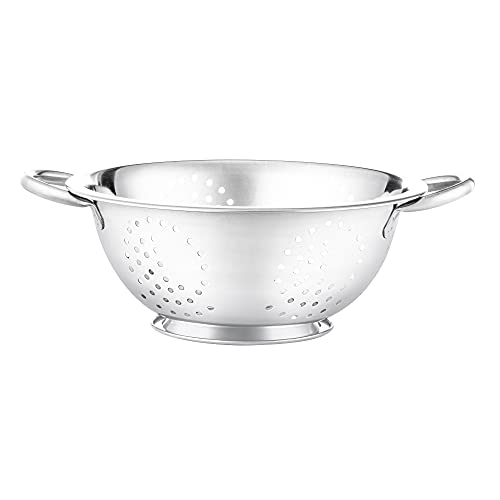What is a Standard Colander?
A standard colander is a kitchen tool that is used to strain liquids from solids. Commonly used for draining pasta or vegetables, it is a bowl-shaped utensil that has holes or slits on the bottom and on the sides to allow for easy draining. A colander is usually made from plastic, metal or silicone and is available in various sizes to accommodate different quantities of food.
The Capacity of a Standard Colander
The capacity of a standard colander varies depending on its size. A small colander can typically hold around 1-2 cups of food, while a large colander can hold up to 4-6 quarts of food. The size of the colander needed will depend on the amount of food being prepared. It is also important to note that a colander should not be filled to the brim, as this can cause it to tip over and spill the contents.
Choosing the Right Colander Size
Choosing the right size colander for the task at hand is important to ensure that the draining process is efficient and safe. If the colander is too small, it can result in an overflow of hot water or boiling liquid, which can cause burns or other injuries. If the colander is too large, it may be difficult to handle or store in a small kitchen.
Uses of a Colander
A colander can be used for a variety of kitchen tasks besides straining pasta or vegetables. It can be used for rinsing or washing fruits and berries and to drain excess liquid from canned goods or pickled vegetables. A colander can also come in handy when making cheese, or draining excess fat from cooked meat, or for sifting dry ingredients such as flour or powdered sugar.
Care and Maintenance of a Colander
To keep the colander in good condition, it is important to clean it regularly after use. Hand washing the colander is usually sufficient, although it is recommended to check the manufacturer’s instructions to ensure that it is dishwasher safe. It is also best to store the colander in a dry place, away from other kitchen tools to prevent it from becoming dented or scratched.






